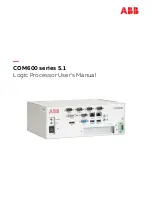
Types of Devices
7-46
7.17 Types of Devices
There are two main types of devices: terminating devices and stackable
devices. Each exports the same device functions, but they implement them
slightly differently. A terminating device is any device that is a data source or
sink. A stackable device is any device that does not source or sink data, but
uses the DEV functions to send (or receive) data to or from another device.
Refer to Figure 7-11 to see how the stacking and terminating devices fit into
a stream.
Figure 7-11.
Stacking and Terminating Devices
Within the broad category of stackable devices, there are two distinct types.
These are referred to as in-place stacking devices and copying stacking
devices. The in-place stacking device performs in-place manipulations on
data in buffers. The copying stacking device moves the data to another buffer
while processing the data. Copying is necessary for devices that produce
more data than they receive (for example, an unpacking device or an audio
decompression driver), or because they require access to the whole buffer to
generate output samples and cannot overwrite their input data (for example,
an FFT driver). These types of stacking devices require different
implementation, since the copying device might have to supply its own
buffers.
Figure 7-12 shows the buffer flow of a typical terminating device. The
interaction with DSP/BIOS is relatively simple. Its main complexities exist in
the code to control and stream data to and from the physical device
Task
SIO
Stackable
Device
Terminating
Device
SIO calls
DEV calls
Содержание TMS320 Series
Страница 1: ...TMS320 DSP BIOS v5 40 User s Guide Literature Number SPRU423G April 2009 ...
Страница 16: ...xvi ...
Страница 152: ...Tasks 4 48 Figure 4 12 Trace from Example 4 7 ...
Страница 168: ...Semaphores 4 64 Figure 4 14 Trace Results from Example 4 11 ...
Страница 202: ...5 20 ...
Страница 287: ...Index 9 Index Void 1 11 W words data memory 3 15 of code 1 5 wrapper function 2 29 ...
Страница 288: ...Index 10 Index ...












































